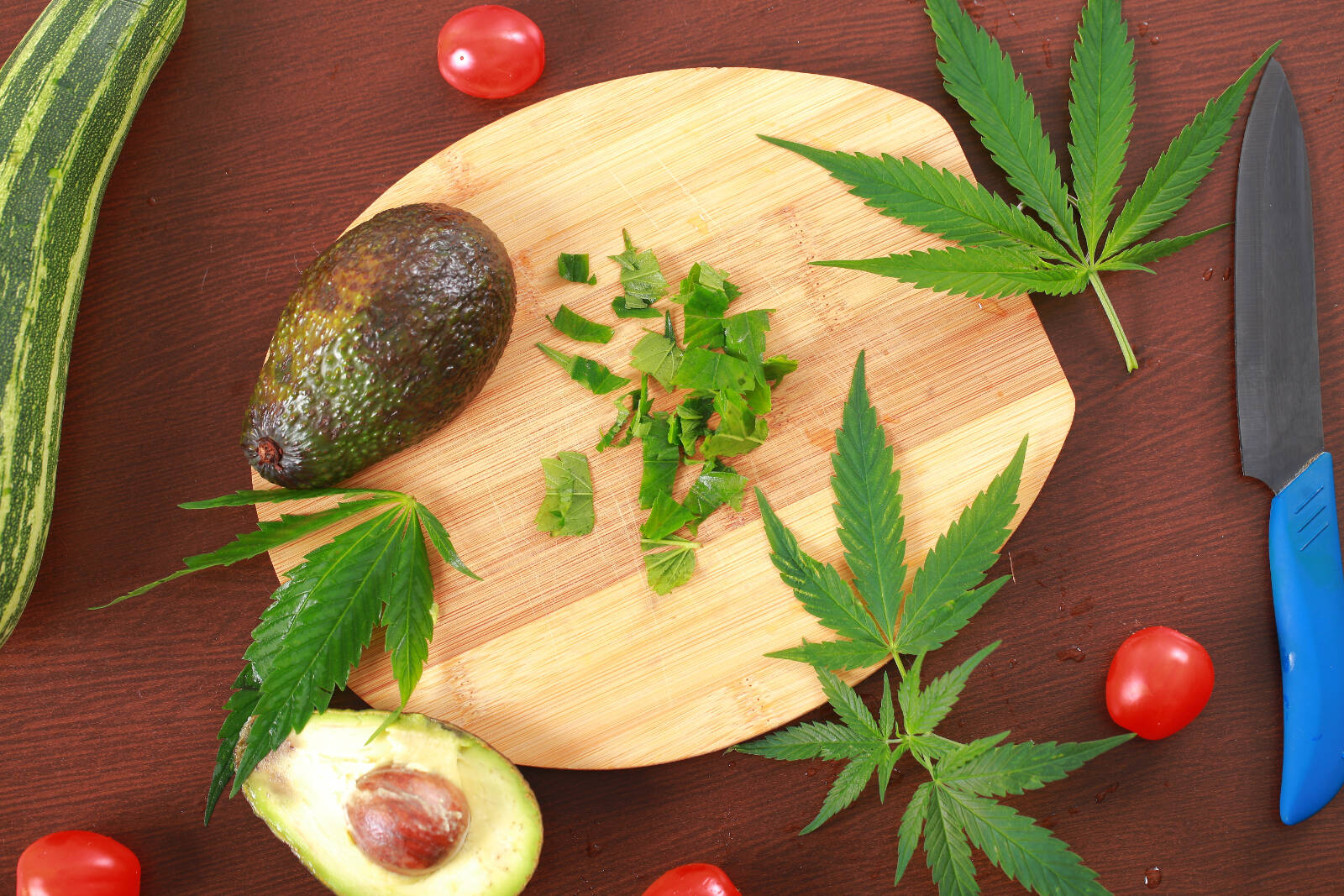By Amanda Yeager, Baltimore Sun
When most people think about cannabis they can eat, their minds dart to brownies, gummy worms and Rice Krispies treats.
But Jazmine Moore offers another way in for the edible cannabis-curious: salad dressing.
Moore, professionally known as “Chef Jazz,” is the founder of Green Panther Chef, a Washington, D.C.-based cannabis catering company that books private events and hands-on cooking classes along the East Coast, including in Baltimore.
When it comes to cooking with cannabis, “I really like to broaden people’s perspectives,” Moore says. That’s where the salad dressing comes in. Aside from the cannabis-infused oil, dressing with cannabis is pretty much the same as dressing without. Home chefs can drizzle it atop a bed of greens or mix it into a potato salad.
“It’s familiar,” Moore says, “and most people can get behind it.”
With the launch of Maryland’s recreational cannabis market on July 1, Moore’s catering schedule stands to get even busier. Cannabis you can smoke was a focus as the state’s dispensaries geared up for the weekend, but those within the industry expect that edibles will eat up a significant chunk of the market, too. Cannabis-infused cooking, meanwhile, is on the rise as people look for new ways to incorporate recreational cannabis into their lives.
Adult-use edible sales in the United States totaled $3.6 billion in 2021, according to data from Statista, and are expected to grow to $8.24 billion by 2025. Edibles appear to be gaining in popularity as more states shift from a medical-only market to a recreational one, Flowhub, a cannabis technology company, suggests in its 2023 industry report.
High on chocolates, gummies
Cannabis companies are taking note. Kind Therapeutics, a subsidiary of the multi-state cannabis operator MariMed Inc., announced plans last summer to add an expanded production kitchen to its Hagerstown facility so it can produce cannabis-infused products like Betty’s Eddies fruit chews, Bubby’s Baked cookie and brownie bits and Vibations powdered drink mixes.
In Cecil County, SunMed Growers is spending $16 million on a new, 25,000-square-foot edibles factory. The facility will produce 50,000 to 60,000 cannabis-infused gummies and chocolates, as well as 10,000 baked goods, per day, according to SunMed President Jake Van Wingerden. He’s hoping to have the first batches of SunMed edibles on dispensary shelves by mid-to-late-July.
Though buds and vape pens make up a hefty share of the market, Van Wingerden thinks edibles have the potential to account for 30 per cent of cannabis sales in Maryland.
“I personally do not smoke and most people I know don’t smoke, especially younger generations. It’s not part of our culture,” he says. “Someone who doesn’t smoke is probably not going to buy a joint to try cannabis, or even a vape. But everybody eats every single day.”
SunMed’s edibles use distillate, a flavourless concentrate refined from the cannabis flower, to precisely measure the dosage that goes into each gummy, chocolate or brownie bar.
‘You can add cannabis’
While Maryland’s law lays out regulations for edibles, cooking meals with cannabis will be limited to the province of home chefs and private events, at least for now.
Will and Gwenelle Parks started offering cannabis cooking classes as a complement to their gourmet condiment company, Saucier Willy, in 2018. The husband-and-wife duo are both certified patients under Maryland’s medical cannabis program as well as trained chefs, and they wanted to educate others about the ins and outs of cooking with cannabis.
“Some people think they can go and buy it from a dispensary and just throw it in their recipe,” Will Parks says.
But that’s not the case. The psychoactive compounds in a cannabis flower purchased at the dispensary must be activated before using in a recipe. The process is called decarboxylation, and there are expensive devices on the market that home chefs can buy to prepare their cannabis for cooking.
Parks has a simpler method to suggest: he instructs students to activate cannabis by grinding it up, putting it in a Mason jar and heating it in the oven at 245°F for 45 minutes. The plant will turn from green to brown, and the jar will keep the aroma of cannabis from overwhelming the kitchen.
Saucier Willy’s cooking classes go over other important topics, too, like dosing. Will Parks prefers microdoses of cannabis, such as a tablespoon of cannabis butter on his morning oatmeal. Others might need a higher dose, particularly when it’s being used for medical purposes. That’s the case for Gwenelle Parks, who suffers from gastroparesis and uses cannabis to relieve pain and other symptoms.
The key is figuring out how the experience of ingesting cannabis will affect you, Will Parks says.
“Everyone knows that if they’ve had an edible and if they’ve smoked something, it’s a completely different feeling you’re going to get,” he says. Edibles are “processed in your liver and affect you longer — you get a more intense high or more intense feelings overall.”
Will Parks also encourages thinking outside the box when it comes to cooking with cannabis: he’s got recipes for everything from meatballs to crab dip to cannabis-infused mocktails.
“I tell people if it’s something you can eat or drink, you can add cannabis,” he says.

